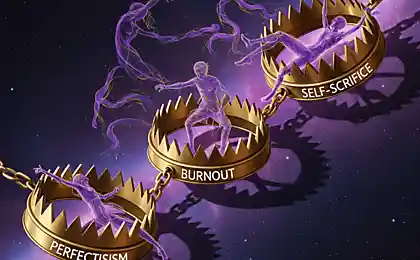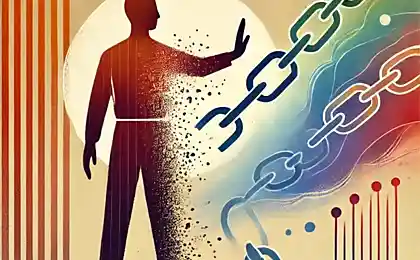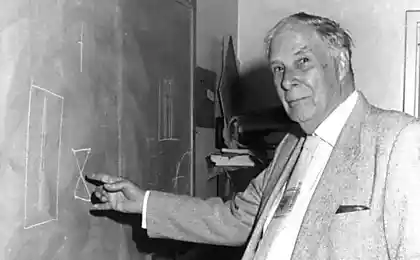97
Strategic Inaccessibility: The Art of Valuing Yourself and Your Time

Imagine jumping on every phone signal, responding instantly, and then wondering where the fatigue and irritation came from. Sounds familiar? It’s time to discover the revolutionary concept of strategic inaccessibility—the art of managing your time and energy.
What is Strategic Inaccessibility
Strategic inaccessibility is not about ignoring people or being selfish. It is the conscious management of one’s accessibility to others in order to protect time, energy and attention, while improving the quality of life and relationships.
In today’s world of hyperconnectivity, we have become hostages to our own accessibility. Social networks, instant messengers, work mail – all this creates the illusion of the need for a constant presence in the digital space. But what if I told you that your value is directly proportional to your inaccessibility?
When you stop giving away your time to everyone, people start to appreciate you and you start to respect yourself more.
The Psychology of Deficit: Why Inaccessibility Increases Value
533194
The scarcity principle is one of the fundamental laws of human psychology. We instinctively attach great value to what is hard to reach. This applies not only to material things, but also to human time and attention.
73%
People recognize that they value communicating with people who are not always available.
When you create a healthy deficit of your time, there is an amazing transformation in your relationship. Colleagues begin to formulate questions more clearly, friends plan meetings in advance, and loved ones appreciate every moment of communication with you.
Even a short pause before replying can make your message more meaningful. The recipient will feel that you are responding thoughtfully, from the heart, rather than responding automatically.
The roots of the problem: why we fall into the trap of constant availability
The roots of our dependence on constant availability go back to childhood. Many of us have learned a simple but destructive formula: love must be earned by enduring utility. This unspoken law we carry into adulthood, becoming people who can’t say no.
Types of Attachment and Their Influence
An alarming type of attachment causes us to be hypervigilant to the signals of others. We are always willing to say yes in order to maintain a sense of security and avoid conflict. Our nervous system is constantly scanning our environment for potential threats—read, someone else’s discontent.
Traumatic experiences can reinforce this trend. The nervous system begins to perceive the speed of reaction as synonymous with survival, forcing us to respond instantly to any requests.
Practical strategies for implementing strategic inaccessibility

The transition to strategic inaccessibility is a process that requires patience and consistency. Here are proven methods to help you start taking control of your time and energy:
- Start with the microboundary: Choose one time slot per day (e.g. 8:00 to 9:00 a.m.) when you are completely unavailable. Gradually expand these boundaries.
- Create "quiet zones": Turn off sound notifications in messengers and social networks. Allocate 2-3 windows a day to check messages.
- Train your environment to a new rhythm: If you’re used to responding instantly, start with a smooth increase in response time — first 30 minutes, then an hour, then a few hours.
- Use automation: Set up answering machines with messages like “Received your message, will respond during the day” or set the status “Do not disturb”.
- Learn the art of tactical refusal: Learn to say no without a long excuse. A simple “I can’t do it now, but thanks for the offer” works better than a verbose explanation.
Rule of three questions
Before agreeing to any request, ask yourself three key questions:
- Is it really urgent?
- Is that in line with my priorities?
- What will I cancel or postpone if I say yes?
The Forgotten Phone Technique
Intentionally leave the gadget in another room for 1-2 hours a day. Start with 15 minutes in the morning and evening. This will help the brain unlearn the constant need for stimulation and significantly reduce anxiety levels.
One-channel rule
Limit the number of channels through which you can be contacted on urgent matters. For example, decide important matters only by phone, and leave everything else for correspondence. This will eliminate 80% of the noise.
The Benefits of Strategic Inaccessibility
40%
Reducing stress levels in people practicing strategic inaccessibility
Studies show that people who implement the principles of strategic inaccessibility notice significant changes in quality of life:
- Improving self-esteem: When you value your time, it is broadcast to others.
- Improving the quality of relationships: People are getting ready to talk to you more seriously.
- Increased productivity: Less distraction means more focus.
- Reducing emotional burnout: Controlling your time restores energy resources
How to Avoid Extremes
Strategic inaccessibility is not about isolating or ignoring loved ones. The goal is to create healthy boundaries, not walls.
It’s important to find a balance between protecting your time and maintaining quality relationships. After a month of practice, evaluate the results: has there been more energy, has stress levels decreased? If some boundaries are difficult, adjust them, but do not give up the concept completely.
Explain your new principles to your loved ones. Most people will understand and support your desire for more informed communication.
Long-term results
Strategic inaccessibility is not a one-time action, but a philosophy of life. People who consistently apply these principles notice dramatic changes not only in relationships, but also in their perception of their own value.
You cease to be a person who is available to everyone and always, and become a person whose time is really valuable. This shift in self-perception affects every aspect of life, from career opportunities to personal happiness.
Your time is your life.
Strategic inaccessibility is not selfishness but healthy self-care. When you begin to value your time, the world automatically begins to value you. Simply being accessible doesn’t always give you a breath of fresh air and space to grow.
Start small, be consistent, and soon you will feel how changing not only your life, but the attitude of others to you. Your time is truly invaluable – it’s time to start treating it accordingly.
Glossary
Strategic inaccessibility conscious management of your accessibility to others in order to protect time, energy and improve the quality of life.
The scarcity principle A psychological phenomenon in which people attach great value to something that is difficult or limited.
Anxiety type of attachment A pattern of behavior characterized by increased sensitivity to the signals of others and the desire to avoid conflict at all costs.
Emotional burnout A state of physical and emotional exhaustion caused by prolonged stress and overstrain.
Information noise Excessive, insignificant information that prevents you from focusing on important tasks.
Digital detox A conscious refusal to use digital devices for a certain period of time to restore mental health.
Personal boundaries Clear rules and limits that a person sets to protect their time, energy, and emotional well-being.























